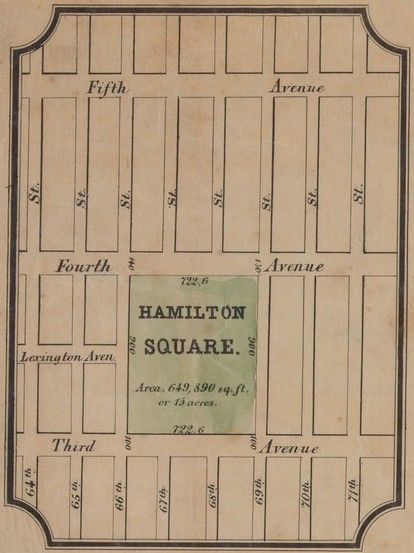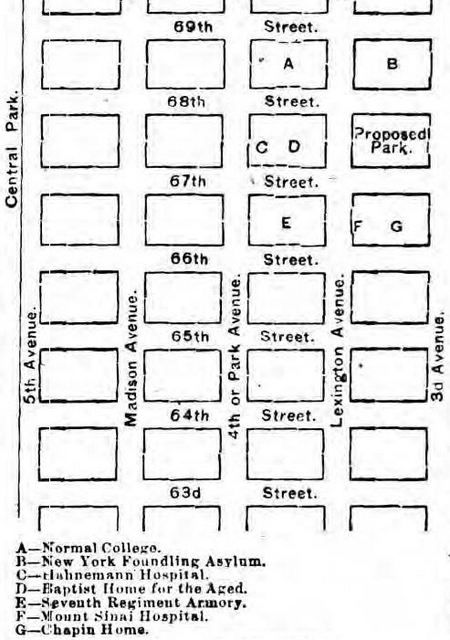Last Chance to Catch NYC's Holiday Notalgia Train
We met the voices of the NYC subway on our nostalgia ride this weekend!



With start of the school year coming up, Untapped Cites is uncovering the hidden and little known past uses of some of New York City’s colleges. Today we look at the main campus of Hunter College, which is housed in four large buildings centered around Lexington Avenue and East 68th Street, following up on our first piece on Vanderbilt Hall at NYU.
Hunter College on the Upper East Side is the epitome of an urban college campus. Ironically, for a college that lacks a quad or even a nearby public park, it is located on part of the site of Hamilton Square, a planned park that never came to fruition.

Hunter West building at right
Hamilton Square was designated as one of the City’s public squares as part of the 1811 Commissioners’ Plan for Manhattan’s street grid. According to the New York Times, the land for the square was given to the City by the estate of Alexander Hamilton on the condition that it be used for a park or military parade ground.

“Public Squares, Parks, and Places, 1852” Via New York Public Library Digital Collections.
Until the 1860s the City did little to improve Hamilton Square in what was then the outskirts of the City though it did allow a church to be constructed at the north end of the square. In 1847, a ceremony was held in Hamilton Square to place the cornerstone for a planned 425-foot tall monument to George Washington. However, that project never advanced further. In the 1850s Hamilton Square was used as the site for special events such as Cattle Shows.
With the decision in 1853 to create Central Park, a large public square nearby was seen as redundant and the City provided the land to public institutions instead. This included a home for the Normal College, a new institution for the training of women teachers, which was established in 1870 under its first president, Thomas Hunter. (In 1914 Normal College was renamed for Hunter.)
As Hamilton Square was being developed in the 1870s,Thomas Hunter and other local leaders attempted to preserve the last remaining undeveloped block. They signed a petition in 1879 stating that the empty block “is now a public nuisance covered with shanties and occupied by the lowest class of people, their dogs, goats and swine” and they urged the state legislature to “pass an act converting the aforesaid square into a public park to be named Hamilton square.”

“Diagram Showing the Hamilton Square District” New York Herald, 17 April 1879
However, what could have been a park for today’s Hunter College students and the neighborhood was instead developed with other public buildings and the last vestige of Hamilton Square disappeared.

Apart from Hunter, today the former Hamilton Square area is a mix of public and private buildings; apparently the original condition that the land be used for public purposes was forgotten or ignored. And that’s why a college built on land donated for a large public square has no quad or park.
Hunter has one of the city’s many remaining skybridges. Check it out and more here. Next, read about the top ten secrets of Central Park.
Subscribe to our newsletter